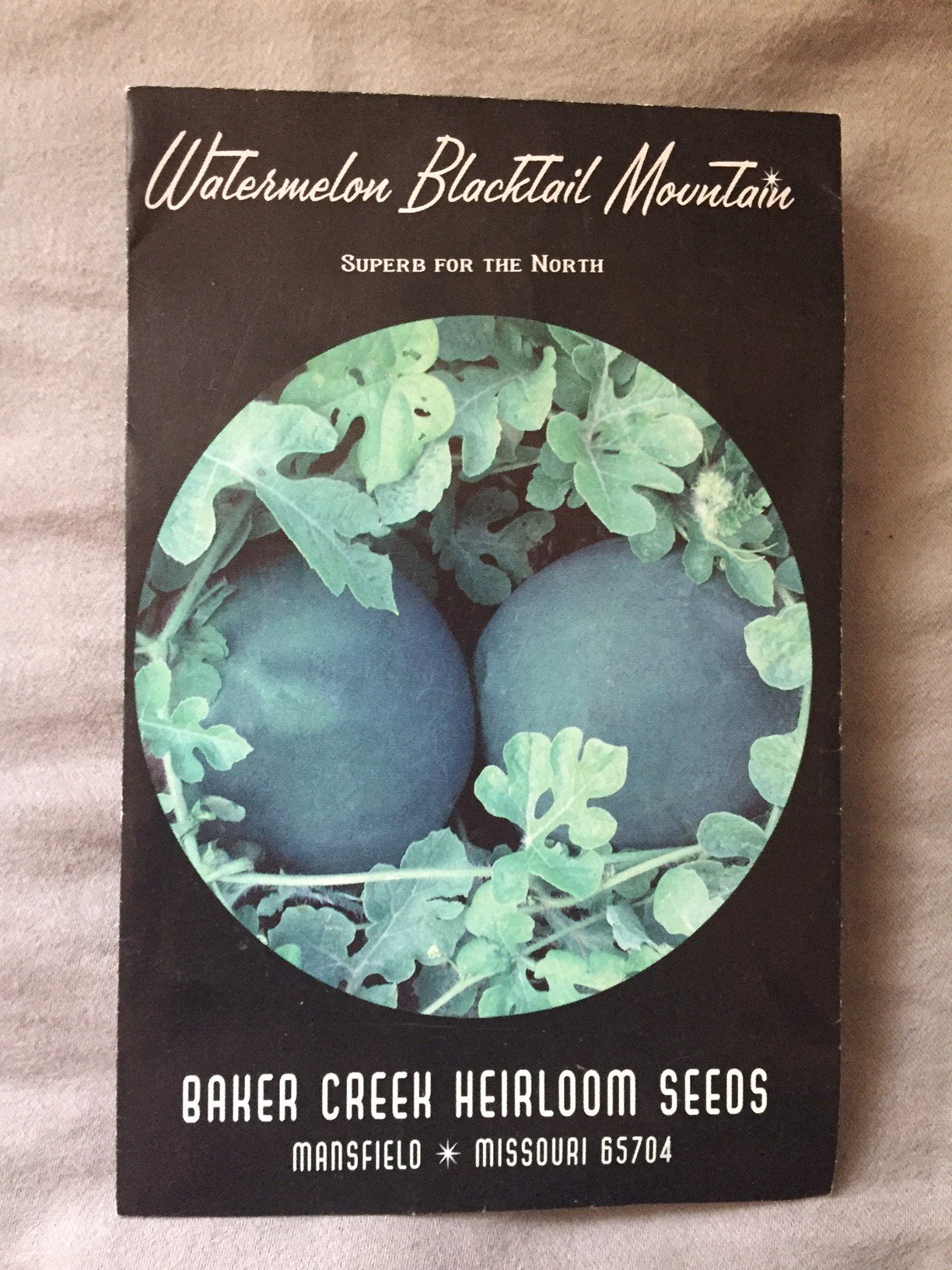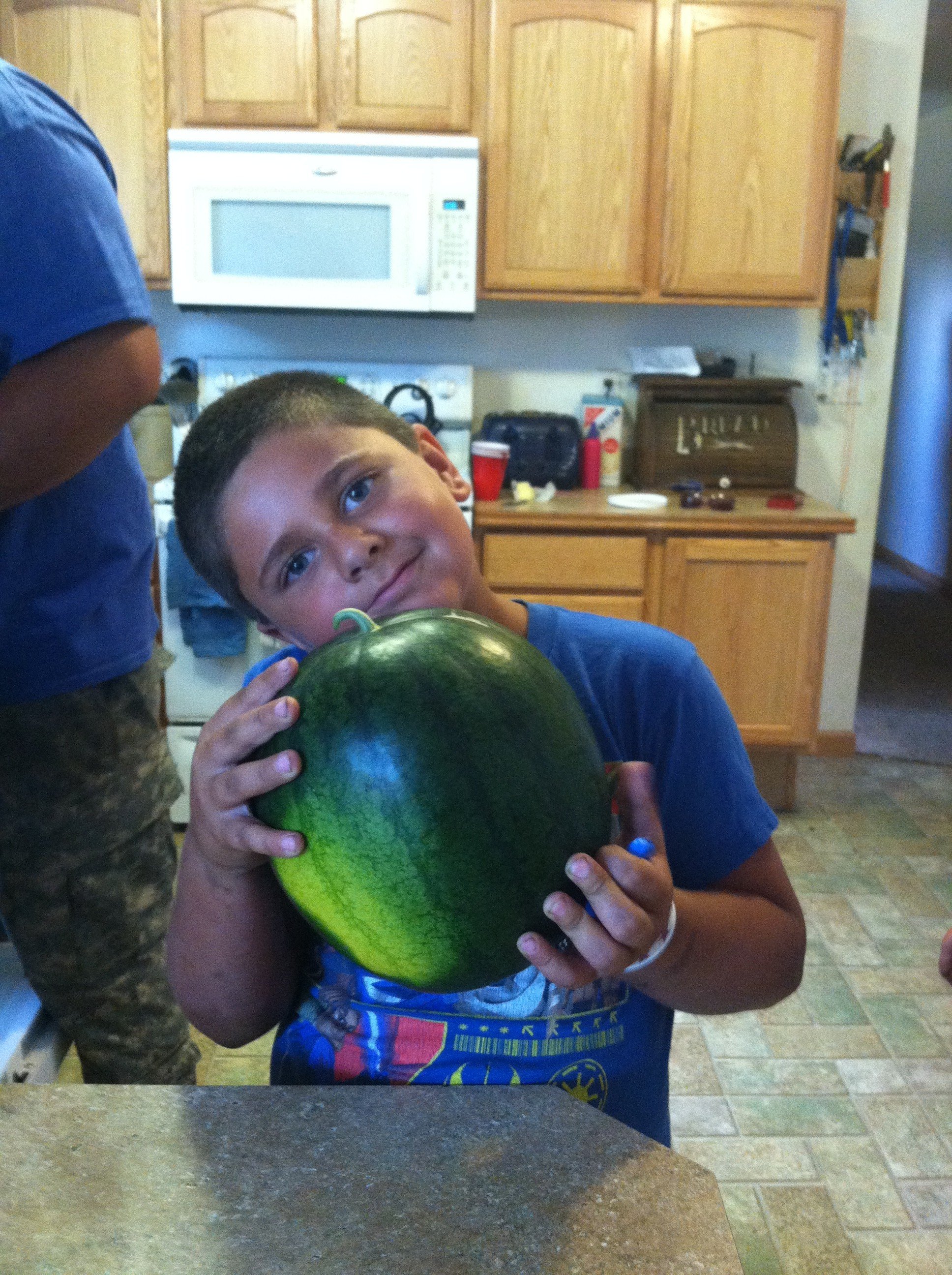The North Idaho Watermelon Challenge

If you have read any of my gardening posts before, you know that the area I inhabit, whilst gorgeous in flora and fauna, is a touch challenging in the garden production area. There are late frosts and snows to contend with, scorching summer temperatures, very cold and dry nights, a general lack of moisture and humidity most of the time, and the list goes on. As an incredibly optimistic human being, I don't let little things like that deter me from something I want to do. My personal life motto is: "There's always a way, you just have to ask the right question(s)"
Which brings us to watermelons. I LOVE watermelons! Nothing makes me happier than to sit down at the end of a long day, covered in sweat and dirt, looking like the backside of an overworked cutting horse, and sinking my chompers into a chilled slab of crisp, sweet watermelon. There is nothing quite like the feeling of surveying your little dirt kingdom at the end of the day as watermelon juice drips down your cheeks, all while surrounded by an adoring collection of dogs, cats, turkeys, chickens, squirrels, and horses. Okay, my serenity is quite often interrupted by the turkey trying to steal a peck of my melon, and the cats biting my toes, but a micro-second of serenity is still something!
Local people constantly told me not to bother trying to grow watermelons, as the growing season here just wasn't long enough to give them any size. A few of my earlier attempts resulted in pathetic softball-sized melons that were inedible. We did have a ton of fun throwing them at each other, so I feel like my efforts weren't in vain. My thoughts were, if I could grow 600lbs of tomatoes in 90 days, why couldn't I grow an edible watermelon, even in the frozen north of the Idaho Panhandle?
So, the research began. I knew I needed a variety that had been bred for my conditions, and imagine my surprise when I found "Blacktail Mountain!" A 70 day watermelon variety that can yield despite cool temperatures. Sign me up! This cultivar was developed by Glenn Drowns when he lived in North Idaho, over by Blacktail Mountain. Well, this little factoid gave me no small amount of glee, because my grandparents live on that very mountain, and if that melon could grow in their hilly pine patch, then the odds of it producing in my pine flats were good!

Soon I had my Blacktail Mountain watermelon seeds on the way from Baker Creek Heirloom Seeds, and I started them a couple weeks before I placed them outside in late May. The plant has a pretty compact spread for it being a melon vine; I don't think it spread out more than 5 feet in diameter. One of the reasons for my success has to be my black greenhouse flooring that I transplanted the watermelon plants into, as I believe the black poly acted as sort of a heat sink to keep the melon plants warm at night. I also fertilized the melon plants quite heavily with kelp and seaweed emulsion and comfrey tea. Another key factor was I had my husband put in drip irrigation to the melons, so that they were consistently, but not over watered (No cracked melons for me!).
The result: Check out this ten pound beauty!

I had five plants, and each one yielded one or two 7-12 pound melons of sweet, crisp watermelonish ambrosia!!! We had never eaten a home grown watermelon before, as it is just not a common thing up here, and the taste was glorious!
Apparently this variety does well everywhere, and I totally recommend giving it a try. Even with our growing challenges, it wasn't a fussy plant to deal with at all!
And as always, all of the images in this post were taken on the author's watermelon juice covered iPhone.
